Why a lone worker safety policy is important
What is a lone worker safety policy?
A lone worker safety policy clearly communicates the risks presented when an employee works alone or in environments with material safety exposure. The policy identifies the responsibilities of each person in this situation and describes the required actions intended to minimize risk.
A lone worker policy is applicable to all employees who may be working alone, at any time, to fulfill the responsibilities associated with their role. Before rolling out a lone worker safety policy, consider identifying the purpose of the policy and how it aligns with the overall safety culture of the organization.
Don’t have a lone worker safety policy in place?
Follow these 5 steps to create a lone worker safety policy for your business.
1. Frame the purpose of your lone worker safety policy
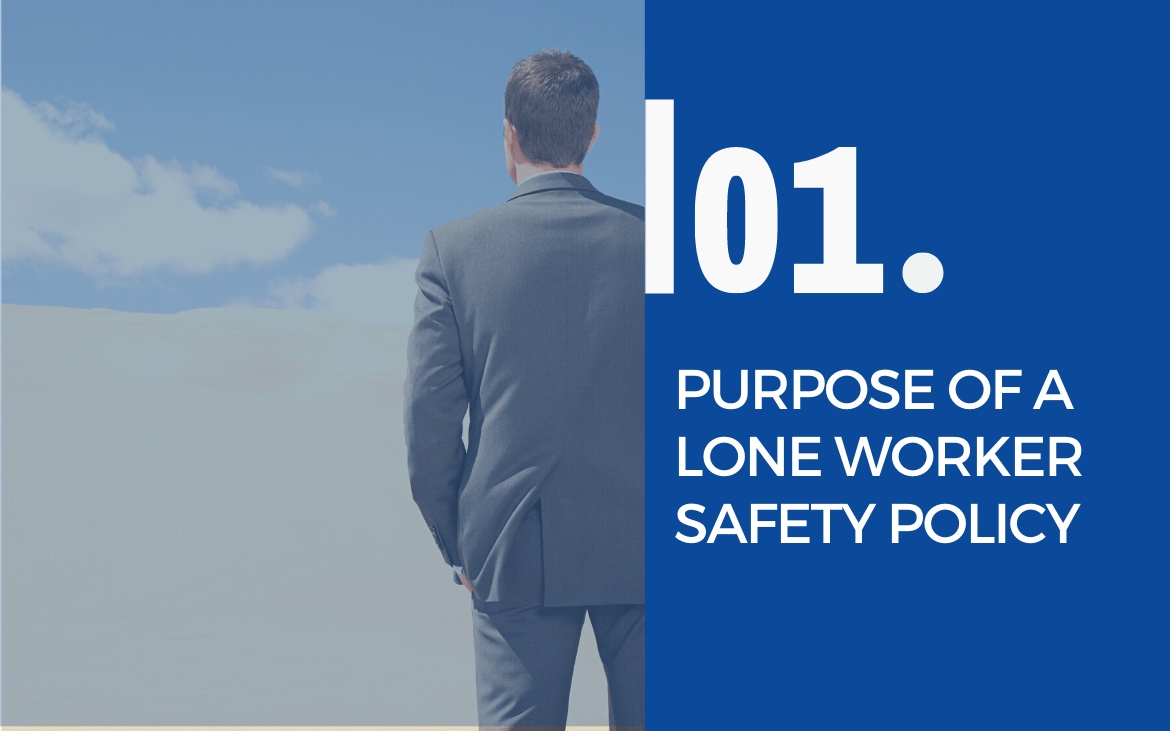
The purpose of a lone worker safety policy is to identify risk exposure faced by employees that work on their own and clearly document the measure the business will implement to protect these team members.
Publishing the organizational commitment and goals towards implementing the policy signifies intent and gives direction to the line managers to roll-out lone worker safety solutions and institutionalize a safety culture in day-to-day operations.
Template to outline the purpose of your lone worker safety policy:
- Protect our associates who may be working alone from any type of harm.
- Comply with relevant safety regulations applicable to our business in letter and in spirit.
- Provide the necessary resources in the form of manpower, technology and budgetary support to implement our safety policy using leading-edge solutions.
- Create a culture of learning and continuous improvement in offering a safe work environment for our associates.
Goals
- Minimize the incidents of physical violence or threats to lone associates.
- Continually identify safety risks to lone associates and implement relevant preventive measures proactively to mitigate threats as they emerge.
- Ensure lone associate safety training and a culture of safety remains a key focus area for the Human Resources team and the local management teams.
- Offer counseling, financial, medical and legal assistance as mandated by company policy, federal and state laws to all associates who may have encountered any type of bodily or mental harm while at work.
2. Identify and evaluate risks to lone workers
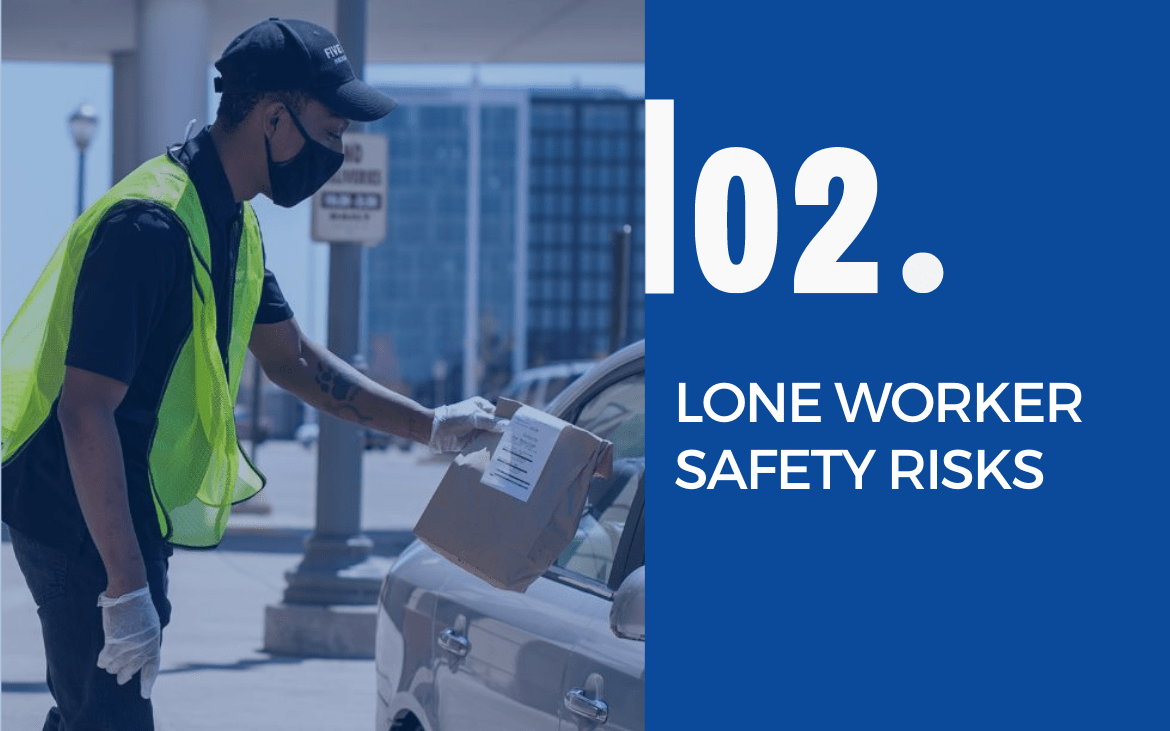
Identify all the job roles that involve working alone or with a limited presence of colleagues. Then, list all the possible risks that lone workers in your organization may encounter at the place of work.
There are three key factors that determine the risks associated with lone workers:
- People: Lone workers face serious risks when they interact with aggressive customers or other people with malicious intent.
- Environment: Consider the environment in which associates operate. This could include working in a high-crime area, exposure to dangerous chemicals, handling valuable merchandise or overnight shifts.
- Tasks: Identify risky tasks that put your lone workers in harm’s way. Examples: Curbside delivery late at night and opening the office location early in the morning.
Remember to talk to employees about risks they perceive in their role and be mindful of employees with unique needs or disabilities.
Include temporary or contract workers when you are assessing job roles and risks for your lone worker safety program.
Most importantly, empower employees to proactively share feedback with the management team as risks and roles may change over time.
[Example] Risks associated with lone workers in a retail chain:
- Encounters with suspicious people during store opening or closing
- Being followed to or from work
- Confronting shoplifting or robbery suspects
- People with malicious intent may see a lone associate who may be on a bank run as an easy target
- Empty parking lots and poorly lit store periphery can attract criminal elements
- Stores that have multiple doors/access points increase the risk of being caught off-guard by an intruder
- Aggressive/argumentative customers can cause anxiety and distraction
- Regular tasks such as trash removal or curbside delivery increase risks to associates and the store may also be left unattended
- In the case of an accident or sudden illness, an associate may not have access to help
3. Define SOPs and train your lone workers
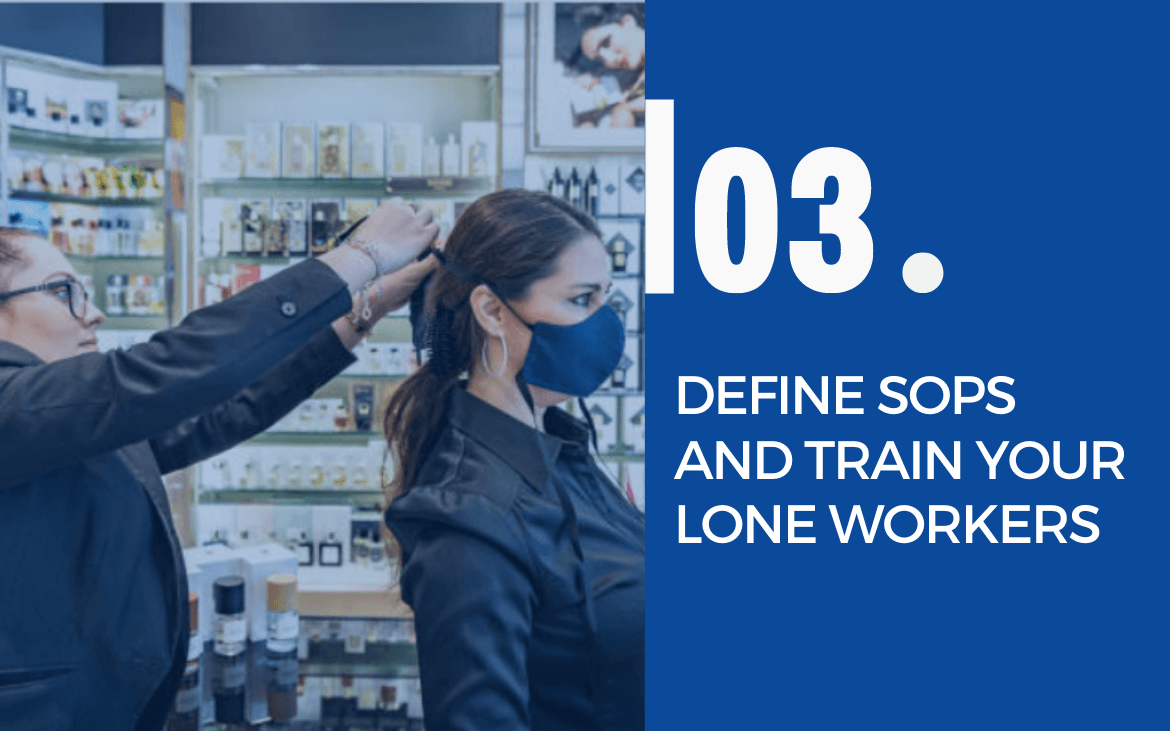
Establish a list of required actions that may help mitigate risks identified in the previous step. These actions should be documented as standard operating procedures (SOPs).
All new hires and existing employees should be made aware of the SOPs through a combination of training programs, role-plays and drills.
[Example] Sample SOPs for lone workers in a retail chain:
- Pay attention to social distancing
- Wear a company-issued safety device
- Make sure all lights are working
- Make sure cameras are operational, in the line of sight and focused properly
- Don’t take trash out after 5pm
Develop a training curriculum to help lone workers gain the necessary understanding and skills needed to mitigate the risks associated with their job roles.
The objective of the training program should go beyond compliance and focus on business outcomes in terms of safety metrics such as number of serious incidents, compliance with SOPs, attrition rate in risky work locations.
Create a system for managers and employees to integrate these actions into their respective routines and provide ongoing coaching
[Example] Lone worker training curriculum for a retail chain:
- Organization’s approach to lone worker safety
- Security cameras and safety devices
- How to report incidents
- How to share your feedback
- How to seek counseling support
- Communication with neighboring businesses
Managing difficult situations
- Aggressive/argumentative customers
- Being followed to place of work
- Dealing with known troublemakers
- Dealing with shoplifting or intent to steal
- Handling people who solicit customers
- Handling dumpster diving and loitering
- Dealing with gun violence
- Preventing and handling vandalism
Conflict resolution and anxiety management
- How to assess a potentially dangerous situation
- Recognizing signs of aggression
- Effective communication in a conflict
- Diffusing a dangerous situation
- What to do if you are taken a hostage
- How to deal with an angry customer
- How to control anger and impulsive actions
- How to properly leverage security cameras and safety devices
4. Roll out an emergency communication plan
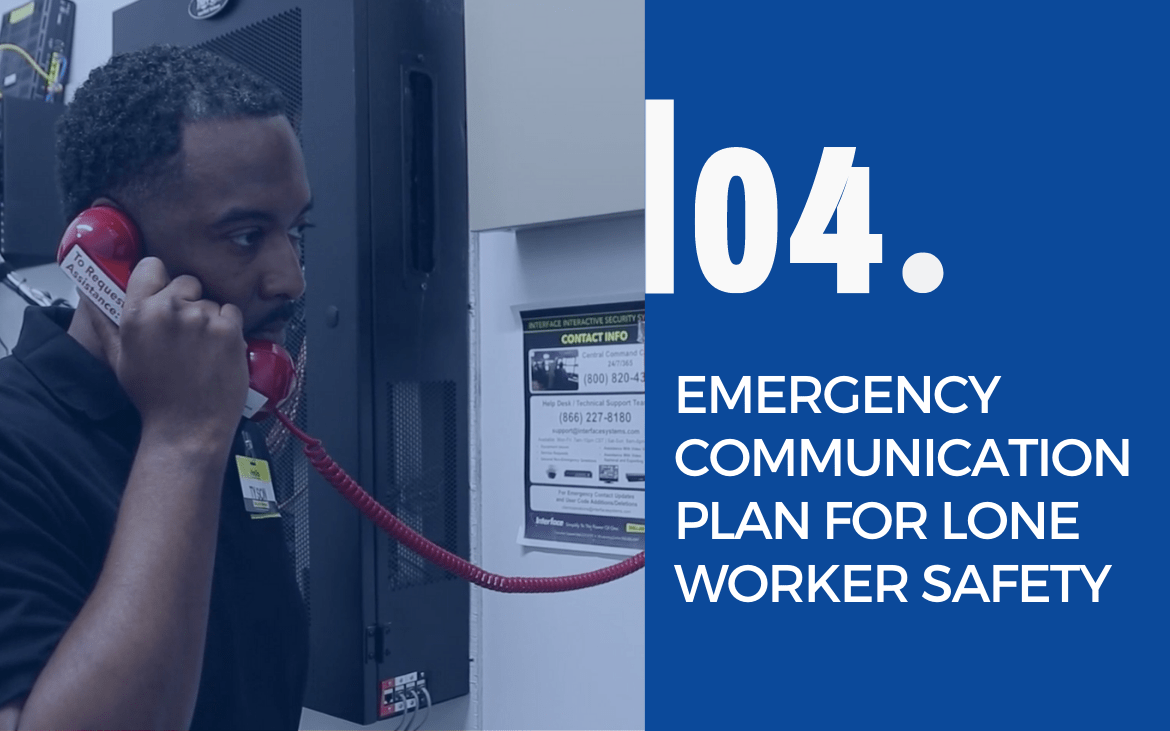
Usually, safety issues and risks associated with lone workers are localized and depend on the risk profile of the business or store locations. The possibility of large scale social disturbance that can risk the safety of lone workers across multiple locations is minimal but can happen without warning as we saw during the nation-wide protest in 2020.
Having an emergency communication plan to give lone workers enough time to avoid, prepare or deal with risky situations is a critical component of your lone worker safety policy.
Outline for emergency communication plan:
Establish a dedicated team: This team is responsible for planning and carrying out emergency communications, managing emergency preparedness, incident response planning, emergency communications protocol and follow-up analysis.
Implement emergency communication technology: Incorporate an emergency mass notification plan into your strategy so you can quickly disseminate information. Make sure that your emergency communication system supports two-way messaging—so employees can respond as needed and you can account for every associate.
Implement monitoring system: Monitor emerging threats and take a proactive approach to employee safety. A remote video monitoring system can help protect employees and customers during all types of threats—from break-ins, aggressive behavior, vandalism, social strife and even natural disasters and other unforeseen dangers.
Review and plan mock drills: Coordinate and communicate regularly with employees involved in your notification plan. Every individual must know their role and what will be expected of them. Review plans regularly, update as needed and practice execution by performing drills.
Know your audience: In an emergency, employees in different roles need different information. Relevant, accurate communication before, during, and after an incident. Always tailor messaging as much as possible to expedite response or action and minimize confusion.
Utilize all communication channels: Deploy an emergency notification system that enables you to access all associates via text, email, voice call and social media from anywhere. Make sure every employee has access and the ability to respond as needed. Establish guidelines for what constitutes an emergency for your organization and when your communication plan will be activated.
Roll out a smart lone worker safety solution
Go live in just a few days. No Implementation. Cost effective.
5. Document the incident management process
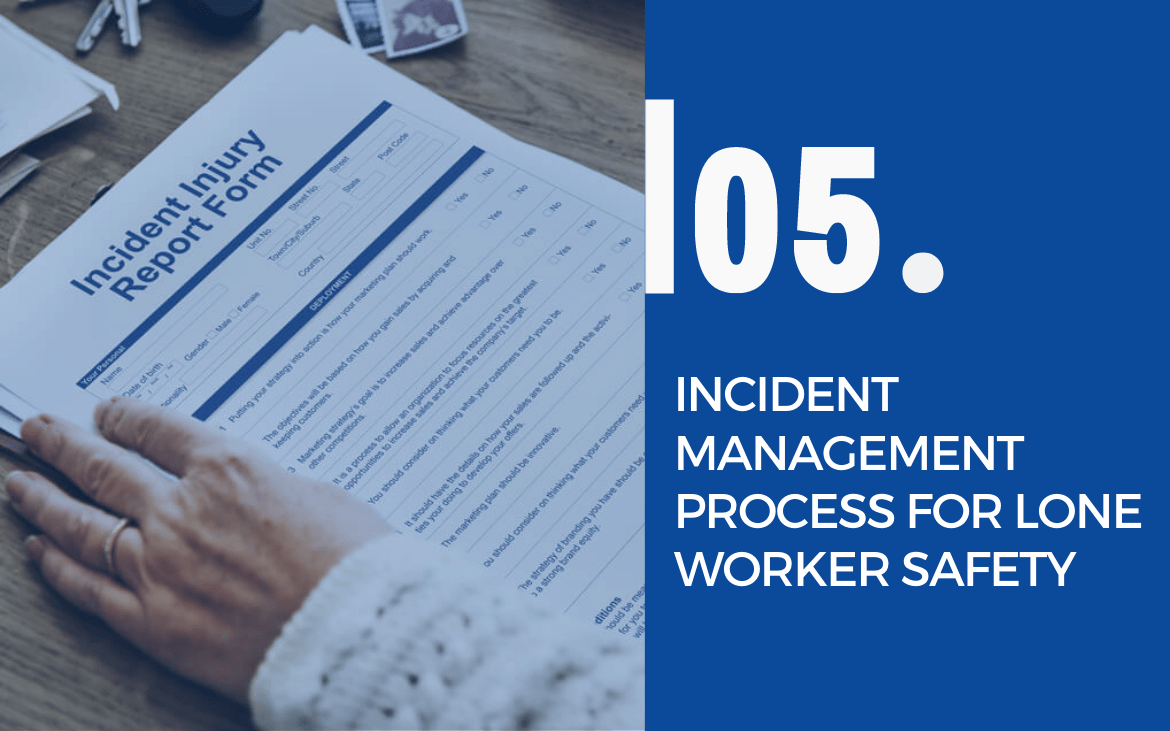
Businesses should either align their incident management process to support the lone worker policy or document an incident management process if they don’t already have one. Note: Most larger, sophisticated Asset Protection teams will already have detailed incident management processes in place. These organizations would simply integrate lone worker policies into their existing incident management procedures.
The primary purpose of the incident management process is to help identify gaps in the safety policy, SOPs, training, lone worker safety solution, security infrastructure and the emergency communication system that’s already in place. If properly implemented, lessons from a safety incident could trigger a change in the safety culture and redefine understanding of risks and their occurrence
Outline for emergency communication plan:
Incident notification
Preliminary information about an incident should be sent to management. This is usually done by the associate involved or the manager of the specific location. This notification should include:
- Location, date and time
- Type of incident and severity
- Employee involved in the incident
- Brief explanation of what happened
- Details of any immediate actions taken (Include images)
Notifications should be sent to designated evaluator(s).
Evaluation
The evaluator should examine the incident and confirm:
- Severity
- Specific incident type
- Immediate actions taken
- Was law enforcement notified and/or involved
The evaluator should determine if an investigation is necessary. Investigations are more likely for medium or high severity incidents.
Investigation
Organize a team to coordinate an investigation or support law enforcement in investigation as the case may be. An investigation involves:
- Gathering information on policies and training
- Documenting the sequence of events
- Gathering information from any employees involved or impacted
- Seeking and documenting all witness statements
- Gathering supporting evidence or additional information that may be useful
Analysis
This critical step determines whether changes in lone worker safety policy or corrective actions are necessary. The analysis should address the following:
- Specifics of what occurred
- Events leading up to the incident
- How it happened?
- Conclusion as to why it happened
- What changes are necessary?
- Is there a need for a corrective action plan?
Corrective actions
Any changes or corrective actions identified should include:
- Priority level
- Person responsible
- Deadline for execution
- Status, including ongoing updates on the progress
Final evaluation
Determine whether the incident can be closed. Evaluators should review all information from every step in the process to approve the conclusion or request further actions.
Secure your lone workers with our interactive monitoring solution
Go live in just a few days. No Implementation. Cost effective.



